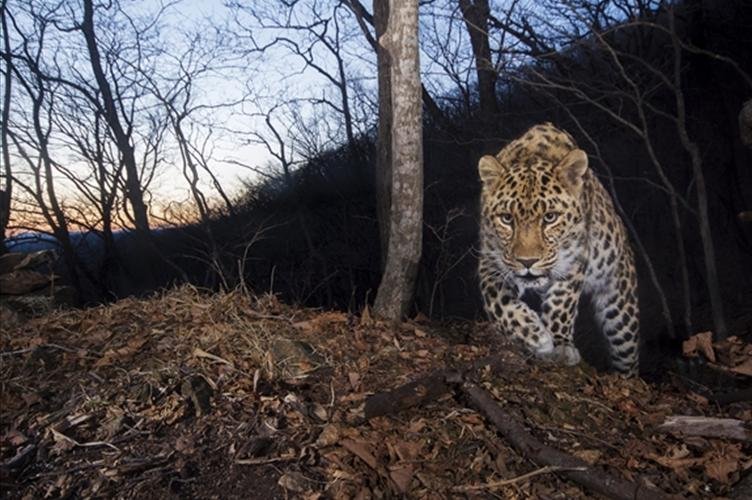1 of 2 | Scientists have teamed up to gather information from camera traps on both sides of the border where Amur leopards reside. Photo courtesy of Emmanuel Rondeau/Wildlife Conservation Society
July 13 (UPI) -- Scientists estimate there are only 84 Amur leopards left in the wild in China and Russia. The leopards live along the southernmost border of the Primorskii Province in Russia and the Jilin Province of China, and they're highly endangered.
This new estimate was recently reported in the scientific journal Conservation Letters by scientists from China, Russia and the United States. The scientists teamed up to gather information from camera traps on both sides of the border.
There are no records of the leopards in other parts of its former range, so this estimate along the border represents the total global population of the subspecies in the wild, researchers say.
The camera traps allow scientists to identify each leopard by its unique spot pattern, providing a precise estimate. About one-third of the leopards were photographed on both sides of the Sino-Russian border.
"We knew that leopards moved across the border, but only by combining data were we able to understand how much movement there really is," said Anya Vitkalova, a biologist at Land of the Leopard National Park in Russia who led the study.
The leopards appear to be recolonizing habitat in China from the Russian side, where there are many more of them, the researchers found.
The new study is the first estimate of the global population of the Amur leopard, and proves the value of international collaboration, according to Dale Miquelle, a co-author and Tiger Program Coordinator for the Wildlife Conservation Society.
"The trust and goodwill generated by this joint effort lays the foundation for future transboundary conservation actions," Miquelle said.















